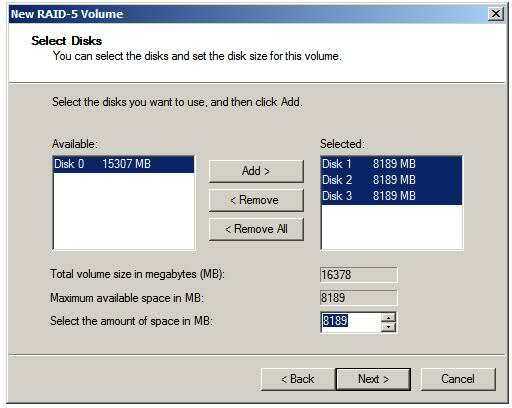7
2
I am assembling file server for home use. I wonder if it is possible to use multiple disks in a way that they will be visible in network as one continuous space? More less like JBOD. I am using SATA disks, NTFS formatted. Can I achieve this by symbolic links? I mean setting up links from 4 disks to one folder that is sheared? Or there is some way to mach all 4 disks with JBOD on system level and expose this space to the network? Can I setup JBOD when two disks are on different controller than other two?
Additional info:
Platform: D945GCLF2 + Atom 330 + 2GB RAM
System: Win2008R2 Server on ATA disk
Storage: 4x1TB SATA disks (2 disks on onboard controller, 2 disks on PCI controller)
Usage: Usually one user reading/writing data, basic access rights model (like one from Windows) is ok.
Note: I would prefer to stick with Windows+NTFS rather then using FreeNAS+ZFS.
Update:
After reading all answers and comments I decided to use Dynamic Disks and go with Raid 5. The reason why I decided this in first place was to solve problems with my main computer and its constant disks consistency checks, lost files or even partitions so RAID 5 it is.
For now I will stay with software RAID and I will see how it works for me. If I performance will be an issue I will switch to hardware RAID as Zoredache and Molly suggested.

why not using a 4 port SATA RAID controller? – None – 2009-09-30T23:39:46.453
@yoosiba, since this is a Mini-ITX board, is it going in a SFF case? Check to see if full-size add-on cards will have enough room. – hyperslug – 2009-10-01T01:41:28.063
4Your data would be safer if you setup a RAID5 volume and included all four of the 1TB drives as members. – Zoredache – 2009-09-30T23:02:20.573
Or better just stick to symbolic links. This minimizes chances of losing everything at once and you can provide selective redundancy to most important files by hand. – None – 2009-09-30T23:44:40.083
As I recall, you can't setup a software RAID 5 for your system volume. The RAID 5 is a good idea, but you would need to the install the OS on separate a disk(s). – None – 2009-09-30T23:55:40.330
Case is not part of the system yet. Currently all described above is lying on the desktop. To start it I need to use screwdriver on proper jumper ;) So I have no space issue yet. SATA PCI controller itself is quite small so it shouldn't cause problems. Anyway I haven't decided yet on case. But I will keep in mind that maybe I will switch to bigger/better SATA/Raid controller. – yoosiba – 2009-10-02T10:19:11.207